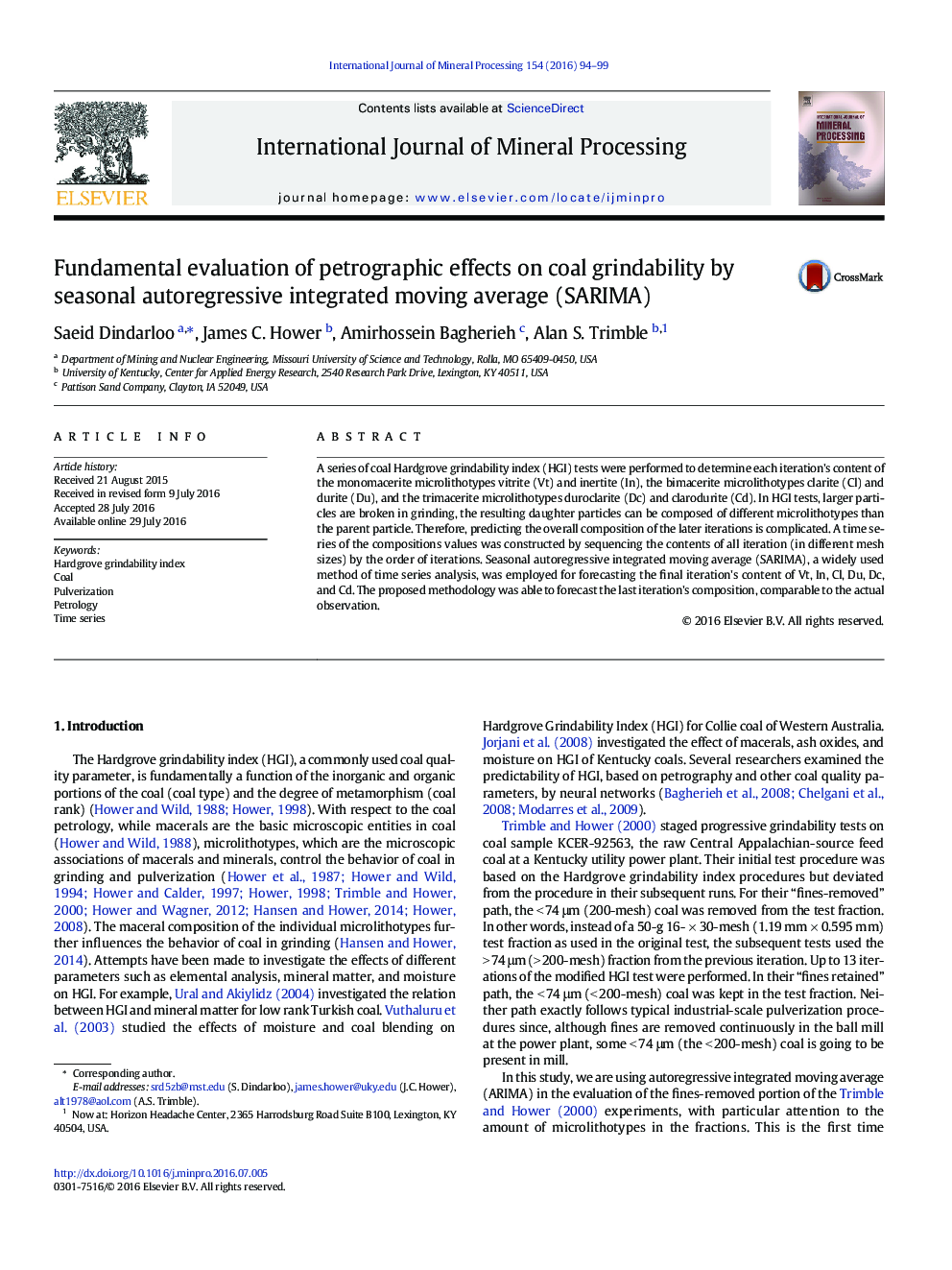| Article ID | Journal | Published Year | Pages | File Type |
|---|---|---|---|---|
| 6659378 | International Journal of Mineral Processing | 2016 | 6 Pages |
Abstract
A series of coal Hardgrove grindability index (HGI) tests were performed to determine each iteration's content of the monomacerite microlithotypes vitrite (Vt) and inertite (In), the bimacerite microlithotypes clarite (Cl) and durite (Du), and the trimacerite microlithotypes duroclarite (Dc) and clarodurite (Cd). In HGI tests, larger particles are broken in grinding, the resulting daughter particles can be composed of different microlithotypes than the parent particle. Therefore, predicting the overall composition of the later iterations is complicated. A time series of the compositions values was constructed by sequencing the contents of all iteration (in different mesh sizes) by the order of iterations. Seasonal autoregressive integrated moving average (SARIMA), a widely used method of time series analysis, was employed for forecasting the final iteration's content of Vt, In, Cl, Du, Dc, and Cd. The proposed methodology was able to forecast the last iteration's composition, comparable to the actual observation.
Related Topics
Physical Sciences and Engineering
Chemical Engineering
Chemical Engineering (General)
Authors
Saeid Dindarloo, James C. Hower, Amirhossein Bagherieh, Alan S. Trimble,
